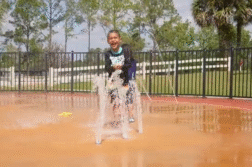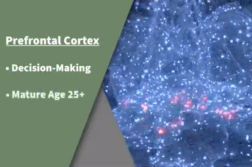HACKENSACK, N.J. (Ivanhoe Newswire)— Imagine having an inherited blood condition that causes extreme fatigue and sudden pain during everyday activities. Sickle cell disease causes red blood cells to form the shape of a sickle, making it difficult for blood to flow. Now, doctors are testing an experimental therapy that could be lifesaving for patients running out of treatment options.
Nineteen-year-old Razel Colon lived his entire childhood knowing the slightest wrong move could cause him terrible pain—or put him in danger.
“It was scary when I used to play outside with my friends and a football would hit me in the chest, knowing that I had sickle cell that could transfer over to a heart attack or stroke,” stated Razel.
“It’s really hard for a parent because there’s nothing you can do to help your child,” shared Kyelia Colon, Razel’s mom.
Razel was diagnosed with sickle cell disease at three months. As he grew older, pain crises meant living in the hospital for days and weeks at a time. Doctors suggested Razel undergo a bone marrow transplant, but no one in his family was a match. That’s when Stacey Rifkin-Zenenberg, DO, pediatric hematologist, Joseph Sanzari Children’s Hospital suggested a new, experimental gene therapy.
“So gene therapy was engineered, so that the patient could be their own donor,” explained Dr. Rifkin.
During the gene therapy procedure, doctors remove a patient’s bone marrow with chemotherapy. The patient’s harvested stem cells are sent to a lab, where a gene is added.
“Then we give them back their own stem cells with the added gene,” continued Dr. Rifkin.
The body begins to produce healthy red blood cells. The process takes about a month.
For Razel, the gene therapy all but wiped out the disease. He is still a carrier of sickle cell, but no longer has pain crises.
“It’s amazing because he gets to live a normal life, which he didn’t live before,” said Kyelia.
“Don’t give up and there’s hope,” exclaimed Razel.
The developers of the gene therapy, Bluebird Bio temporarily halted clinical trials earlier this year after a patient treated in 2016 developed blood cancer. Scientists have since determined the cancer was not linked to the sickle cell treatment and have asked the FDA for permission to resume the trial. The researchers are hoping to apply to the FDA for approval next year.
Contributors to this news report include: Cyndy McGrath, Executive Producer; Kirk Manson, Videographer; Bob Walko, Editor.
To receive a free weekly e-mail on medical breakthroughs from Ivanhoe, sign up at: http://www.ivanhoe.com/ftk
Sources:
https://www.fda.gov/vaccines-blood-biologics/cellular-gene-therapy-products/what-gene-therapy
https://www.nytimes.com/2021/03/10/health/sickle-cell-gene-therapy-bluebird.html
MEDICAL BREAKTHROUGHS
RESEARCH SUMMARY
TOPIC: SICKLE CELL: ONE LAST CHANCE?
REPORT: MB #4919
BACKGROUND: Sickle cell disease (SCD) is a group of inherited red blood cell disorders. Healthy red blood cells move through small blood vessels to carry oxygen to all parts of the body. In someone who has SCD, the red blood cells become hard and sticky and look like a c-shaped farm tool called a “sickle”. The sickle cells die early causing a constant shortage of red blood cells, and as they travel through the blood vessels, they get stuck and clog the blood flow which can cause pain and other serious problems such as infection, acute chest syndrome, and stroke. Research shows SCD affects approximately 100,000 Americans.
(Source: https://www.cdc.gov/ncbddd/sicklecell/facts.html and
SYMPTOMS AND DIAGNOSIS: Symptoms of SCD can vary from person to person and can change over time. Early symptoms may include a yellowish color of the skin, known as jaundice; fatigue or fussiness from anemia or painful swelling of the hands and feet, known as dactylitis. People who do not know whether they make sickle hemoglobin, or another abnormal hemoglobin, can find out by having their blood tested. Every state in the U.S., the District of Columbia, and the U.S. territories require every baby be tested for SCD as part of a newborn screening program. In newborn screening programs, blood from a heel prick is collected in “spots” on a special paper. Doctors can also diagnose SCD before a baby is born using a sample of amniotic fluid, the liquid in the sac surrounding a growing embryo, or of tissue taken from the placenta, the organ that attaches the umbilical cord to the mother’s womb.
(Source: https://www.nhlbi.nih.gov/health-topics/sickle-cell-disease)
WHY GENE THERAPY?: Research shows the reason gene therapy is critical for sickle-cell patients is that the gene mutation causing the disease is on the adult hemoglobin gene, not the fetal hemoglobin. Gene therapy in sickle cell works by knocking down the manifestation of the BCL11A gene to reverse it back to fetal hemoglobin. This increases fetal hemoglobin, which does not sickle, and directly reduces sickling. A patient’s blood stem cells are collected and exposed to a path containing instructions to knock down BCL11A. The patient then receives chemotherapy in a process called conditioning, which is similar to plowing a field to make room for new seeds. Finally, the gene-modified cells are given back via intravenous infusion.
FOR MORE INFORMATION ON THIS REPORT, PLEASE CONTACT:
EDNA ARGUELLO
If this story or any other Ivanhoe story has impacted your life or prompted you or someone you know to seek or change treatments, please let us know by contacting Marjorie Bekaert Thomas at mthomas@ivanhoe.com




